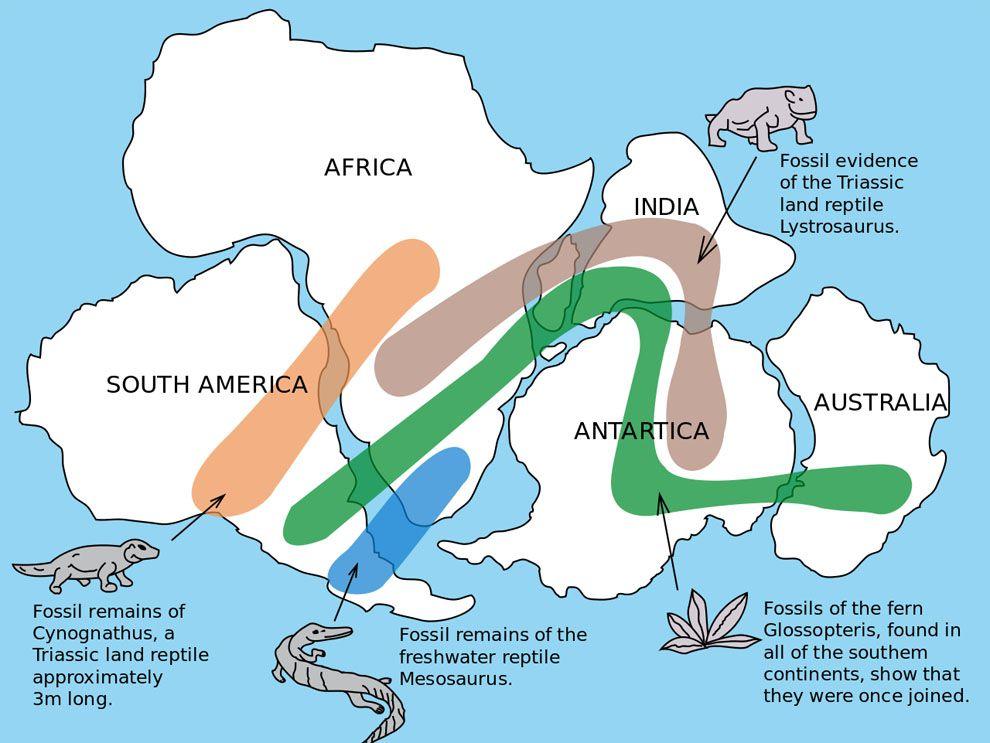
Wegener and Pangea
Although he was not the first, but Frank Bursley Taylor, announced the theory according to which the continents were connected, it was he who named one original continent Pangea and is considered the creator of this discovery. The meteorologist and polar explorer Alfred Wegener published his idea in Die Entstehung der Continente und Ozeane. Since Wegener was a German from Marburg, the first edition was printed in German in 1912. The English version appeared in 1915. However, only after the end of the First World War, after the release of an expanded edition in 1920, did the scientific world start talking about this concept.
It was a very revolutionary theory. Until now, geologists believed that the continents do move, but vertically. Nobody wanted to hear about horizontal movements. And since Wegener was not even a geologist, but only a meteorologist, the scientific community furiously questioned his theory. One of the essential evidence supporting the thesis of the existence of Pangea is the fossil remains of ancient animals and plants, very similar or even identical, found on two distant continents. To challenge this evidence, geologists have suggested that land bridges existed wherever they were needed. They were created (on the maps) as needed, i.e., by dissecting the remains of, for example, the fossil horse hipparion found in France and Florida. Unfortunately, not everything can be explained by bridges. For example, it was possible to explain why the remains of a trilobite (after crossing a hypothetical land bridge) are on one side of New Finland, and did not cross over ordinary land to the opposite shore. Trouble delivered and the same rock formations on the shores of different continents.
Wegener's theory also had errors and inaccuracies. For example, it was wrong to say that Greenland was moving at a speed of 1,6 km/year. The scale was a mistake, because in the case of the movement of the continents, etc., we can only talk about speeds in centimeters per year. He did not explain how these lands moved: what moved them and what traces this movement left. His hypothesis did not gain wide acceptance until 1950, when numerous discoveries such as paleomagnetism confirmed the possibility of continental drift.
Wegener graduated from Berlin, then began working with his brother at an aviation observatory. There they carried out meteorological research in a balloon. Flying became a great passion of the young scientist. In 1906, the brothers managed to set a world record for balloon flights. They spent 52 hours in the air, surpassing the previous feat by 17 hours.
In the same year, Alfred Wegener sets out on his first expedition to Greenland.
Together with 12 scientists, 13 sailors and one artist, they will explore the ice shore. Wegener, as a meteorologist, explores not only the earth, but also the air above it. It was then that the first weather station was built in Greenland.
The expedition led by the polar explorer and writer Ludwig Milius-Erichsen lasted almost two years. In March 1907, Wegener
From 1908 until the First World War, Wegener was a lecturer at the University of Marburg. His students especially appreciated his ability to translate even the most complex topics and the results of current research in a clear, understandable and simple way.
His lectures became the basis and standard for textbooks on meteorology, the first of which was written at the turn of 1909/1910: ().
In 1912, Peter Koch invites Alfred on another trip to Greenland. Wegener postpones the planned wedding and leaves. Unfortunately, during the journey, he falls on the ice and, with numerous injuries, finds himself helpless and forced to spend a lot of time doing nothing.
After his recovery, four researchers hibernate in the eternal ice of Greenland at temperatures below ?45 degrees for the first time in human history. With the advent of spring, the group goes on an expedition and for the first time crosses Greenland at its widest point. A very difficult path, frostbite and hunger take their toll. To survive, they had to kill the last horses and dogs.
During the First World War, Alfred was twice at the front and twice returned wounded, first in the arm and then in the neck. Since 1915 he has been engaged in scientific work.
After the war, he became head of the Department of Theoretical Meteorology at the Naval Observatory in Hamburg, where he wrote a book. In 1924 he entered the University of Graz. In 1929, he began preparations for a third expedition to Greenland, during which he died shortly after he was 50 years old.

